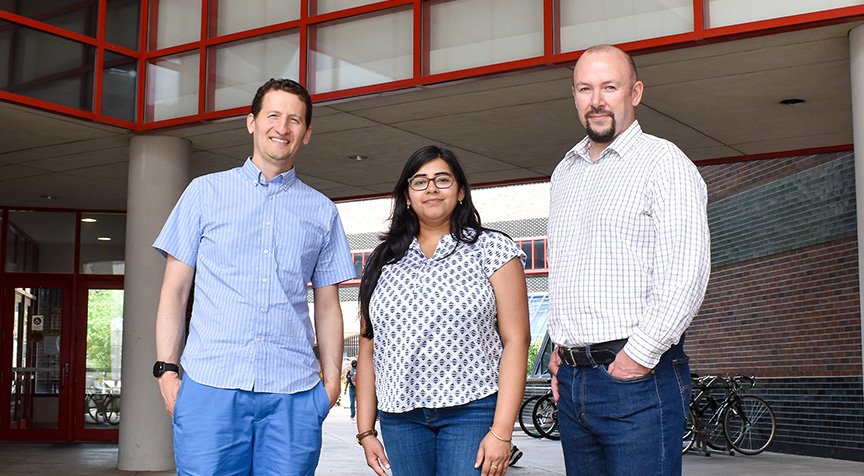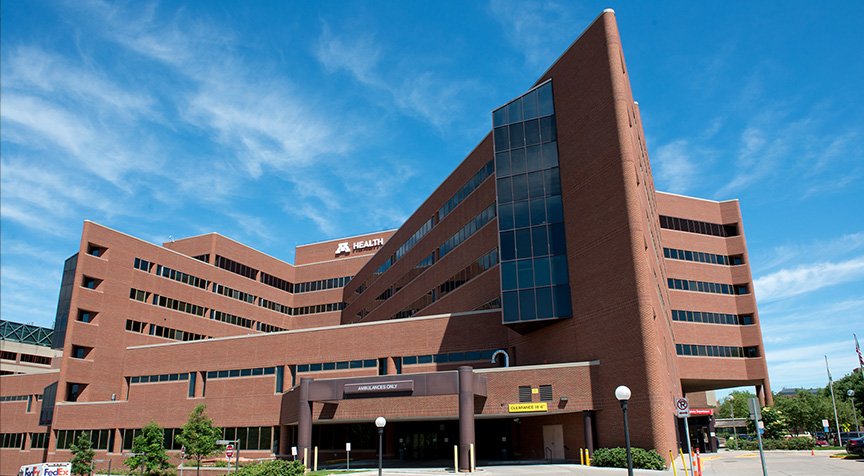Optimizing the Future of Healthcare

It’s an exciting time for ISyE researchers working to improve human health, with untold promise for the years to come.
When Professor Jean-Philippe Richard came to the U of M from the University of Florida in 2018, he reached out to researchers at the medical school’s Department of Radiation Oncology about collaborating on “some of the problems they face,” he says. Today Richard, who also serves as ISyE’s Director of Faculty and Academic Affairs, is applying ISyE tools to make radiation therapy both safer and more effective.
Historically, radiation therapy has often carried an unintended consequence: the radiation sometimes winds up affecting healthy tissue along with the tumor it is meant to target. “This is kind of an optimization problem,” Richard says. “In this particular problem, you’re looking at the best set of decisions [about] how you deliver the radiation to the patient so that you shrink the tumor, but you don’t [damage] the healthy tissue, which could make the life of the patient difficult after treatment.”
One of the projects he is most excited about seeks to refine a treatment called brachytherapy. Brachytherapy involves using needles to place radiation “seeds” in the body near the tumor. Along with Ph.D. student Nasim Mirzavand Boroujeni, Richard is working on a 3D-printed mask for skin cancers on the nose. “The optimization question is, what positions do you put the needles in the mask to best treat a particular cancer for a particular patient,” Richard explains. “It’s pretty complicated because it has the features of optimization problems we cannot easily solve—it is discrete, nonlinear, and nonconvex.”

Bringing the ISyE ‘toolkit’ to healthcare
The U of M’s location in a region widely recognized as a leading healthcare hub helps nurture the growing collaboration between ISyE and health researchers, says Assistant Professor Saumya Sinha. That’s one reason she’s thrilled to join the U this year, where she first met her postdoctoral advisor at a workshop on liver transplantation. “Minneapolis is so well suited for this kind of work. We have the clinic, we have a big, research-focused medical center. There are many [healthcare] partners who are thinking about these relevant problems—I have the toolkit, they have the domain expertise.”
Sinha’s research is in the realm of transplantation policy, “an area that’s rich for optimization to contribute,” she says. Who is “a good transplant candidate,” and at what time? How can we ensure that fewer donated organs are wasted? “Is there financial incentive for accepting patients who may be high risk, but also in more dire need of a transplant? How do we define fairness, how do we define equity?” Mathematical modeling can help objectively address critical questions like these, Sinha explains.
Professor Kevin Leder’s first love is evolutionary biology. His research uses applied mathematics to try to discover how, when, and why cancer begins. “What mutations do you need to get, say, colon cancer? Can we figure out the most likely sequence of mutations that lead to a patient getting colon cancer?
“One thing I’ve worked on is [creating] spatially explicit models of the beginning of cancer—what I call cancer initiation,” Leder says. Such knowledge has implications for both early treatment and prevention of cancer. He also studies “local recurrence” of tumors, and has found that patients 50 and older “are more likely to have a larger pre-malignant field surrounding the tumor. That should inform the treatment decisions, so we can prevent further recurrence.”
Leder also developed a model for tracking tumor-cell resistance to treatment in lung cancer and leukemia. And he is bringing optimization to the treatment of chronic myeloid leukemia “to minimize the tumor burden at the end of the treatment window.”

Mathematical modeling in precision medicine
Often these endeavors look different for different patients, Leder explains, adding layers of complexity to basic questions. “If you say, oh, let’s train an algorithm to classify how people respond to this [particular] cancer therapy,” the next question is, which people? Right now, he’s exploring that line of inquiry with multiple myeloma patients. Precision medicine, or personalized medicine, takes into account the individual’s genes, history, environment, and lifestyle, and Leder is excited about the potential big data offers to build on that approach.
Boroujeni relishes the chance to collaborate with physicians and scientists fighting cancer, and finds herself “getting more and more interested in this area. We are working with people from the radiation oncology department at the University who are providing us with a lot of patient cases and information regarding what they expect to see,” she says. “Seeing how much we can improve the results for the patients is really enjoyable for me.”
Sinha feels similarly about the chance to bring her “toolkit” to challenging health policy questions. “Being able to bring about any improvement in patient outcomes or in access to healthcare, that’s a direct contribution to social welfare. It’s very, very fulfilling,” Sinha says.
For ISyE scholars, opportunities to make meaningful improvements in human health appear limitless. Says Leder: “As medicine becomes [increasingly] more rational, it’s going to require more engineering—and more engineers.”